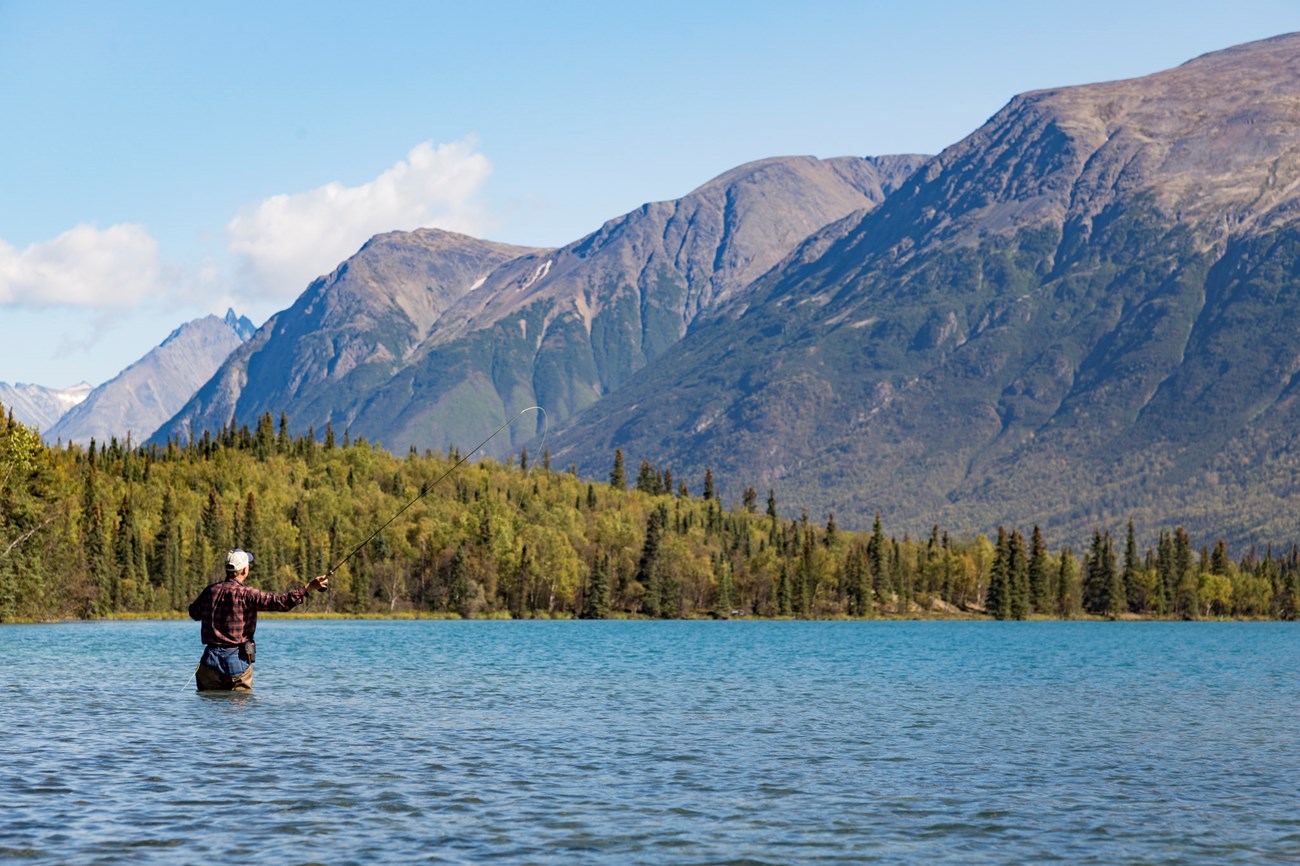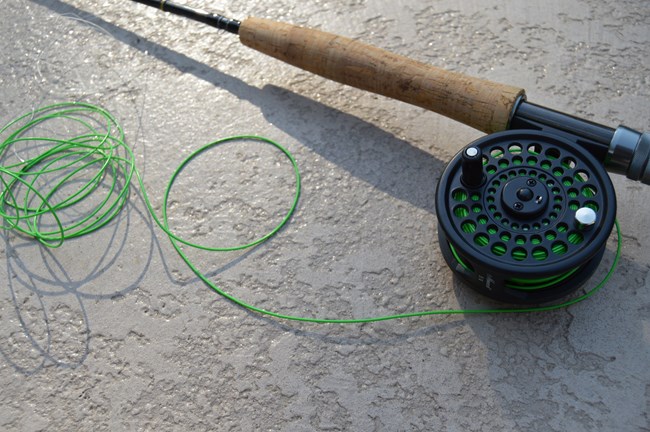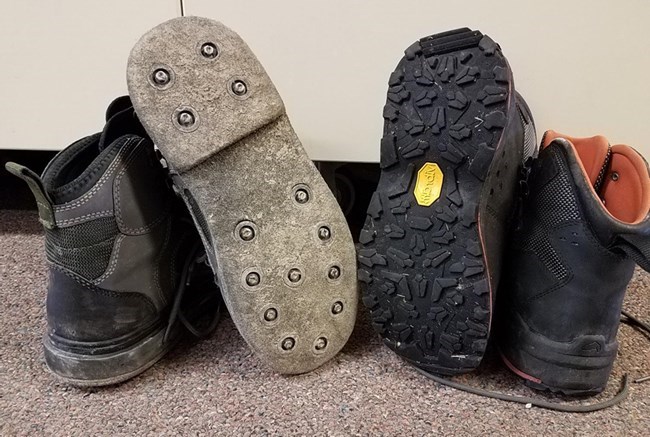Last updated: June 20, 2018
Article
Gearing Up for Fishing

NPS Photo/ T. Vaughn
Anglers are essential to conserving native fish in national parks. Using the right equipment can help keep native fish safe and help you avoid some of the common mistakes people make while fishing.
Determine what type of fishing you want to do, and adjust your gear list accordingly, most fishing builds off of the following essentials.
The Basics
Pack the 10 essentials with you. They include important fishing safety items such as food and water, sun protection, a flashlight, and an extra layer of clothing.
Polarized sunglasses help you to see fish underwater without the glare of the sun. These are especially useful when you choose to forgo fishing and watch fish instead.
Fishing Gear

NPS Photo/ B. Windell
Fishing License
For most parks a license is required; however not in all, and some may even require a park specific license. Read the regulations of the park where you are fishing to know which license to buy.
Rod
Depending on the type of fishing you want to do, rods will vary. Things to consider when fishing with a rod are its flexibility, strength, and length. Each of these elements will vary depending what type of fishing you want to do. There’s anything from a fly fishing rod, spin rod, or deep sea rod. When choosing a rod, choose one that will support the weight of the fish you are trying to catch.
Reel
The rod will determine the type of reel you are using as well as the type of line you use.
Fishing line
There are many types and sizes of line. Depending on your rod, reel, and what you want to catch, your line will also vary.
Note: Discarded fishing line has serious environmental impacts and can be lethal for waterfowl, wading birds and other wildlife. Always pack out your fishing line and dispose of it in a manner that ensures it will not find its way back into the environment.
Hooks
The National Park Service recommends using single, barbless hooks for catch-and-release fishing. These hooks cause less injury to fish and help conserve them for future generations. If your hook has a barb, you can use needle nose pliers to pinch the barb down.
Lures/Tackle/Bait
It helps to study the environment around you when choosing the tackle or lures you want to use. Notice the types of insects or fish around you, and match your tackle to the type of food your intended catch eats. Or, research the type of food fish eats before heading into a national park to fish.
Live bait is often prohibited in parks, but check with your parks regulations to see if they allow bait. Live bait should never be released except into the waterbody from which it was captured

NPS Photo? Forrest Czarnecki
Needle nose pliers
In order to conserve native fish, they must be returned to the water unharmed. Needle nose pliers help to take the hook out of the fish mouth when returning it to the water.

Photo / Todd Koel
Non-slip shoes and/or waders
Having a good footing is essential to reeling in a catch. Make sure that your shoes have a good grip. If fly fishing, you may need to wade into the water to get a better cast. Some parks ban felt soled boots due to the transport of aquatic invasive species.
Fish landing net
Fishing nets help to keep the fish safe after reeling in your catch. Use a rubber or nylon net or one without knots, that could cause harm to the fish.
A fishing buddy
It’s safer, and more fun, to fish with a companion, but if you prefer go solo, take extra measures to ensure that you are prepared since you will be alone.
